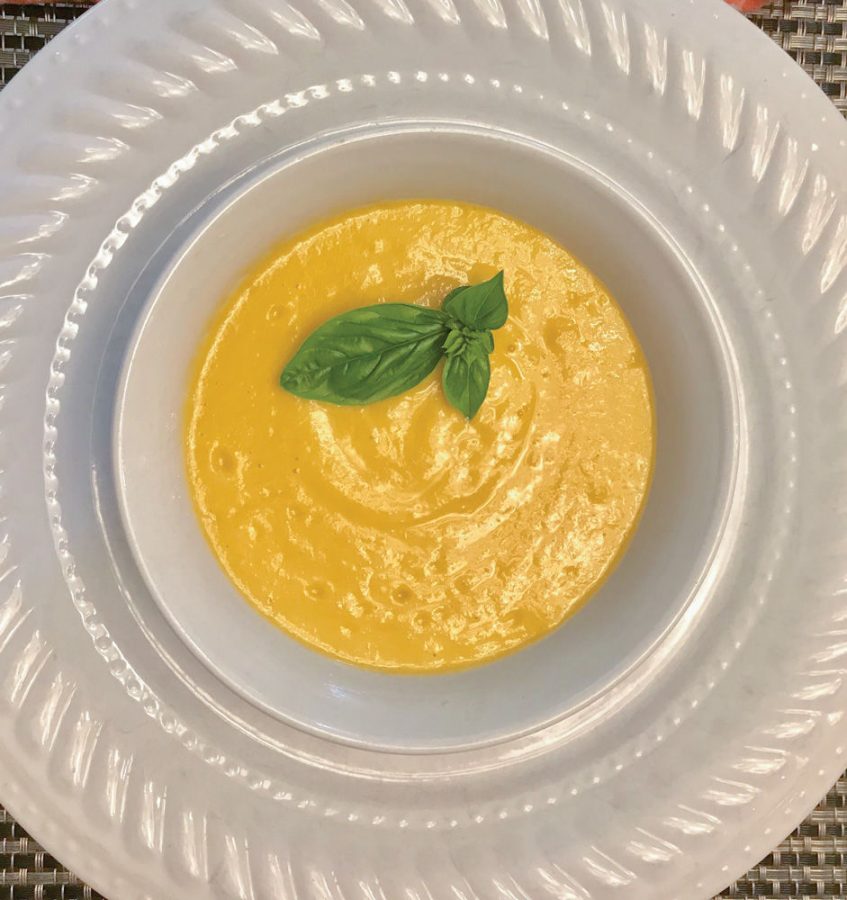Just Peachy
Published July 12, 2018
Peach season has arrived. To celebrate this season, load up your fruit basket with these juicy, sweet marvels and prepare to indulge. You can enjoy your peaches fresh-picked and eaten out-of-hand, sliced or chopped as part of a salad or with your yogurt or cereal, grilled, sautéed, baked, or stuffed. This delicious seasonal gem is the ultimate summer treat. And its intoxicating aroma, the result of its membership in the rose family, will not only delight your palate but signal to all who enter your kitchen that summer is here.
Peaches were cultivated as early as the Stone Age in China and then made their way across the Mediterranean and spread into Europe. It wasn’t until the 19th century that we began growing peaches commercially here in the United States. Since that time, the varieties of peaches have expanded. There are now yellow and white and red-fleshed peaches, and donut-shaped and Saturn-shaped peaches, to name but a few. Peaches can be categorized as clingstone, meaning the flesh clings to the pit, or freestone, in which the flesh easily separates from the pit. Most of the clingstone crop, which tends to be the earlier season variety, is used commercially for canning.
While you might think that something as sweet as a peach couldn’t possibly be good for you, you’d be wrong. In addition to being a great source vitamin A, fiber, and potassium, peaches pack some powerful nutrients- folic acid, thiamin, riboflavin, vitamin B-6, niacin, and pantothenic acid—all vital to cell growth and nerve health. They are also low in calories—about 45 calories per medium-sized peach.
When I was a child, my best friend and neighbor Harriet Benjamin had two peach trees in her backyard. I remember keeping a close eye on those peaches, squeezing them gently from day-to-day, until they just started to give. We’d eat them right from the tree, after first rubbing them manically against our clothing to get rid of as much of the prickly fuzz as possible. Believe it or not, most peaches are born fuzzy. The ones that come to market are usually mechanically brushed to remove that pesky fuzz.
Picking the perfect peach is a bit of an art and, of course, the fruit you purchase directly from a farm or farmer’s market will be the best. However, not everyone has easy access to a farm or farmer’s market. If you are selecting your peaches from the supermarket, look for the ones labeled “tree ripened.” The area around the stem of the peach should be yellow. A green color indicates that the peaches were picked too soon and, most likely, spent excessive time on a refrigerated truck. Though they may soften some after sitting out at room temperature, odds are that the resulting flesh will be mealy.
Peaches that are soft when you buy them will probably last no longer than a day or two, though they can be refrigerated to keep them from getting softer.
Cathy Thomas, a representative of Melissa’s World Variety Produce, offers this advice: “Look for fruit that is plump and gives to gentle pressure at the shoulders but without any soft spots or mushiness. Peaches should be fragrant, with a rich peachy smell.”
Doing some research, I learned that peaches will not ripen once they are picked; however, they will get softer and their texture will improve if you place them in a brown paper bag and keep them at room temperature for one to three days.
Some cooks prefer using peeled peaches, particularly when making peach ice cream and peach pies or tarts. If that is your preference, the easiest way to remove the peel is to put your peaches into a pot of boiling water for about forty-five seconds. Then immediately transfer the peaches from the pot to a bowl of ice water, which will stop them from cooking. Once cooled, you will be able to lift or easily peel off the skin with your hands. And, by the way, don’t even think about throwing away those yummy peels. Either eat them, or save them to put into your morning smoothie.
It’s not surprising that peaches have a natural affinity to almonds. That is because, just like most other stone fruits, the seeds inside of the pits impart an almond flavor. However, they are most definitely not edible. While professionals are able to use the seeds to infuse flavor into milk or cream used to make ice cream and puddings, don’t be tempted to try this in your kitchen. That’s because peach seeds are poisonous. As Shirley O. Corriher, a biochemist and the author of ‘’Cookwise’’ (William Morrow, 1997), explains, ‘’It’s the plant’s way of protecting its young, making the seeds poisonous to animals, so the animals don’t choose it as a tasty snack.”
A far safer way to highlight almond flavor in your ice cream or custard is by adding a bit of almond extract or a handful of chopped almonds.
Here are some of my favorite ways to cook and bake with peaches. Of course, nothing beats eating a just-picked fresh peach!















